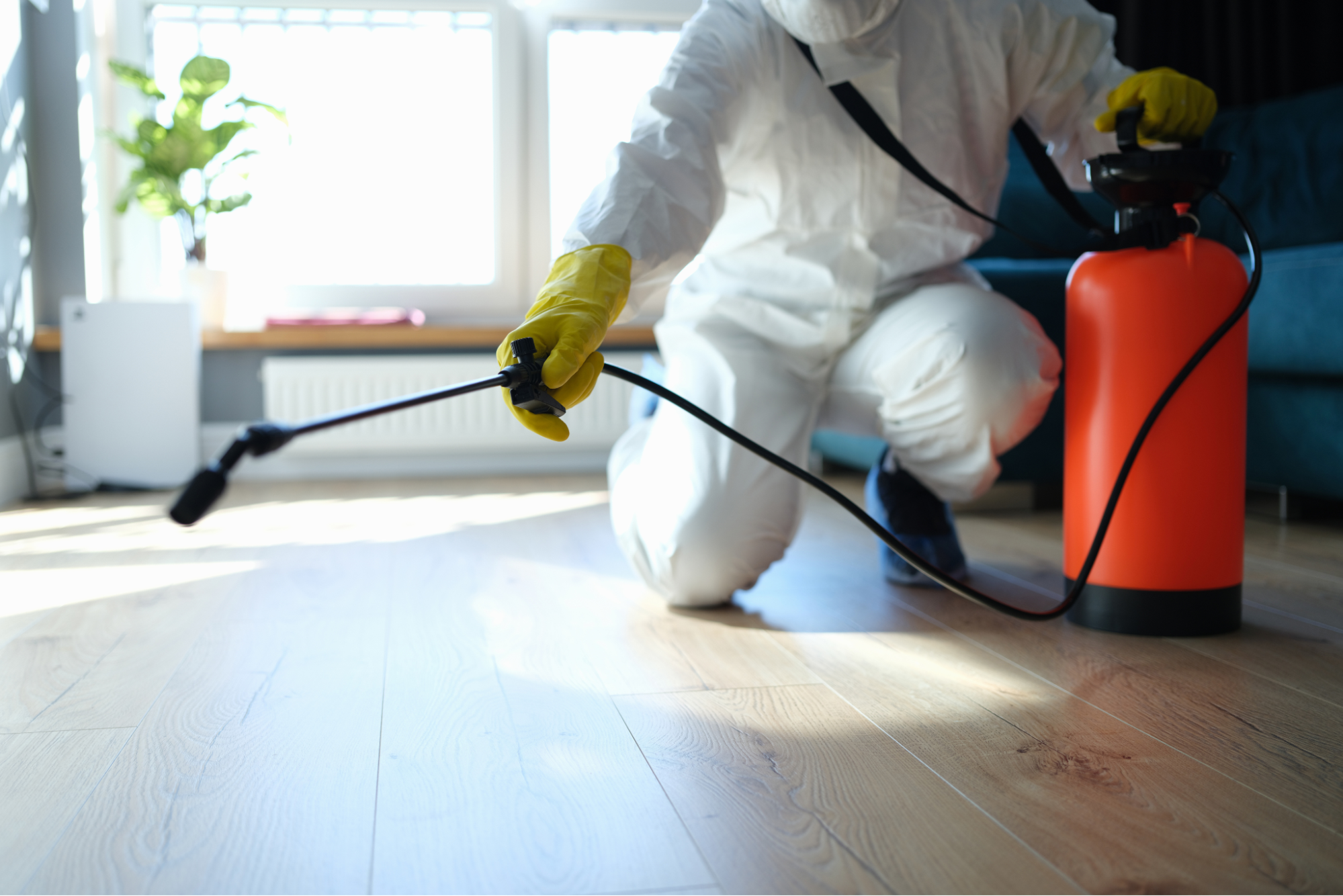Expert A1 Charlotte Bed Bug Exterminator - Quality Solution Ensured
Expert A1 Charlotte Bed Bug Exterminator - Quality Solution Ensured
Blog Article
Bed Insect Treatment Malfunction: Comparing Chemical Vs. Non-Chemical Solutions
In the world of pest control, especially when handling the persistent problem of bed insects, the selection between chemical and non-chemical treatment solutions can be a pivotal one. Both techniques supply unique advantages and disadvantages, influencing elements such as effectiveness, safety and security considerations, and general price. By taking a look at the nuanced details of each technique, a more clear understanding of which course to seek in attending to a bed bug invasion can be attained.
Performance of Chemical Therapies
Chemical therapies for bed insect infestations have actually been extensively identified for their quick and potent efficiency in eradicating these bugs. When considering the effectiveness of chemical therapies, it is vital to understand that they can give a fast and thorough solution to a bed bug issue. Professional pest control operators commonly depend on insecticides to target bed insects at different phases of their life cycle, consisting of eggs, fairies, and adults. These chemicals generally work by interrupting the bed insects' nerves, resulting in paralysis and ultimate fatality.
Moreover, chemical treatments have the benefit of using residual impacts, implying that they can continue to get rid of bed bugs also after the preliminary application. This residual activity is particularly beneficial in combating any kind of possible re-infestations. Additionally, the quick activity of chemical therapies can bring relief to individuals encountering serious bed insect infestations, allowing them to regain control of their home promptly.
Security Interest In Chemical Solutions
When using chemical remedies for bed bug therapy is ensuring the security of owners and the atmosphere,One important facet that requires cautious consideration. While chemical therapies can be reliable in eradicating bed insects, they may present threats otherwise managed properly. One of the primary safety interest in chemical options is the prospective injury they can create to human health. Direct exposure to certain chemicals utilized in bed insect therapies can cause respiratory system issues, skin irritability, or other unfavorable reactions, particularly in people with pre-existing problems or sensitivities. In addition, incorrect application or dosage of chemical pesticides can lead to poisonous residues remaining in the cured location, positioning long-term health and wellness threats to occupants.
In addition, the environmental influence of chemical solutions is an additional significant consideration. Some pesticides used in bed bug treatments might be damaging to useful pests, wildlife, and environments if they leach into the dirt or water systems. It is vital to use chemical treatments carefully, complying with safety standards, and thinking about less toxic alternatives to alleviate these dangers and make certain the secure and reliable monitoring of bed insect infestations.
Benefits of Non-Chemical Approaches
Considering the prospective safety concerns and environmental influence connected with chemical services for bed insect therapy, discovering non-chemical methods offers an appealing choice with a number of distinctive advantages. Non-chemical techniques offer a safer option for families, specifically those with kids, pet dogs, or individuals i was reading this conscious extreme chemicals. These methods remove the dangers of exposure to toxic compounds, lowering the potential for adverse health and wellness effects. Moreover, non-chemical treatments are eco-friendly, as they do not contribute to air or water contamination, making them a lasting selection for parasite control.
Furthermore, non-chemical options can be efficient in targeting bed insects, including hard-to-reach areas where chemical treatments may not penetrate - A1 charlotte pest control companies. Methods such as heat treatment, vacuuming, steam cleaning, and cushion coverings provide thorough eradication without the usage of damaging chemicals.
Limitations of Non-Chemical Treatments

In addition, non-chemical therapies commonly call for numerous applications to attain effective eradication. This can be taxing and may not constantly assure complete removal of all bed insects and their eggs, specifically in hidden or hard-to-reach locations.
Additionally, the success of non-chemical therapies heavily relies upon correct execution and thoroughness, which can be testing for people without professional experience. Poor application of non-chemical techniques may lead to insufficient removal, causing persistent invasions and the requirement for additional therapies.
Consequently, while non-chemical therapies have their benefits, it is necessary to recognize these constraints and consider them when determining the most efficient strategy for handling bed insect invasions.
Expense Comparison: Chemical Vs. Non-Chemical Options
Given the limitations associated with non-chemical therapies, an essential aspect to evaluate in the context of bed bug administration is the cost contrast between chemical and non-chemical choices. In contrast, non-chemical treatments like warm treatment or vapor can be much more pricey, with expenses varying from $1,000 to $6,000 for a whole home. While the initial price of chemical treatments may seem lower, multiple treatments might be called for to totally eliminate the invasion, potentially increasing the total expense.
Final Thought

Taking into consideration the possible safety concerns and environmental effect connected with chemical services for bed bug treatment, discovering non-chemical strategies provides click an appealing alternative with a number of distinctive benefits.Offered the limitations linked with non-chemical therapies, an essential element to assess in the context of bed insect monitoring is the price comparison between chemical and non-chemical options. In comparison, non-chemical treatments like drywood termite treatment warmth therapy or vapor can be much more costly, with expenses varying from $1,000 to $6,000 for a whole home. While the preliminary price of chemical treatments might appear lower, multiple treatments may be needed to completely eradicate the invasion, potentially raising the overall cost.In final thought, when comparing chemical and non-chemical bed insect therapy options, it is important to consider performance, safety, benefits, constraints, and expense.
Report this page